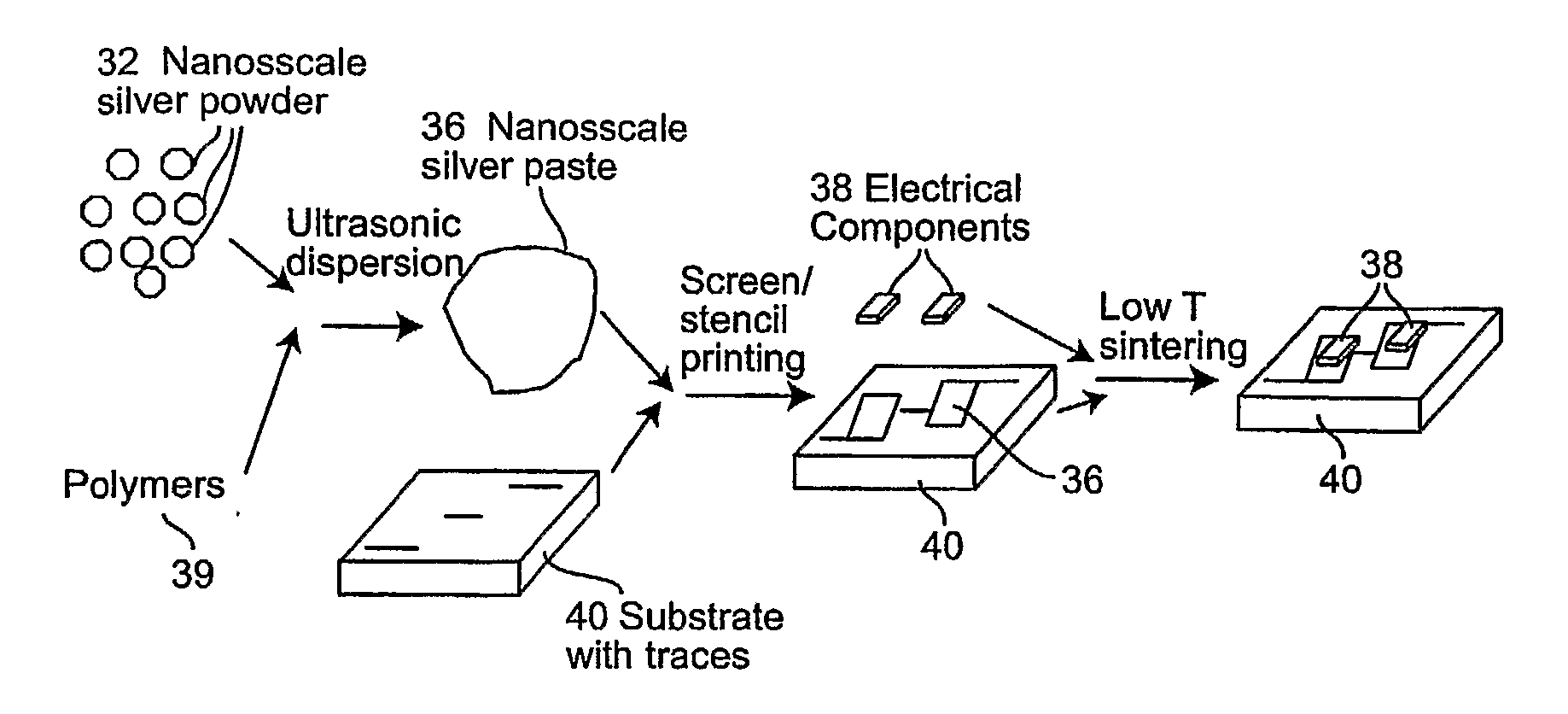Nanoscale metal paste for interconnect and method of use
- Summary
- Abstract
- Description
- Claims
- Application Information
AI Technical Summary
Benefits of technology
Problems solved by technology
Method used
Image
Examples
example 1
Method for Regulating the Densification of Silver by Binder System Composition
[0044] Regulation of the densification temperature / rate of the metal particles in the paste of this invention can be achieved by adjusting the type of components that go into the binder system. In particular, it is possible to increase or reduce the firing temperature for any given particle size of the silver (or other metal or metal alloy). For example, if it is desired to increase the effective onset of densification of, for example, a nanosilver paste as discussed above, this can be achieved by substituting the binder system components with alternatives that burn out at higher temperatures to closely match the desired or target peak processing temperature (e.g., the binder system might be chosen to vaporize or otherwise decompose at a temperature that is the same as or slightly below (e.g., within 50° C. or 30° C. or 10° C.) the sintering temperature for the metal or metal alloy particles. This has th...
PUM
| Property | Measurement | Unit |
|---|---|---|
| Size | aaaaa | aaaaa |
| Size | aaaaa | aaaaa |
| Particle size | aaaaa | aaaaa |
Abstract
Description
Claims
Application Information
 Login to View More
Login to View More - R&D
- Intellectual Property
- Life Sciences
- Materials
- Tech Scout
- Unparalleled Data Quality
- Higher Quality Content
- 60% Fewer Hallucinations
Browse by: Latest US Patents, China's latest patents, Technical Efficacy Thesaurus, Application Domain, Technology Topic, Popular Technical Reports.
© 2025 PatSnap. All rights reserved.Legal|Privacy policy|Modern Slavery Act Transparency Statement|Sitemap|About US| Contact US: help@patsnap.com



